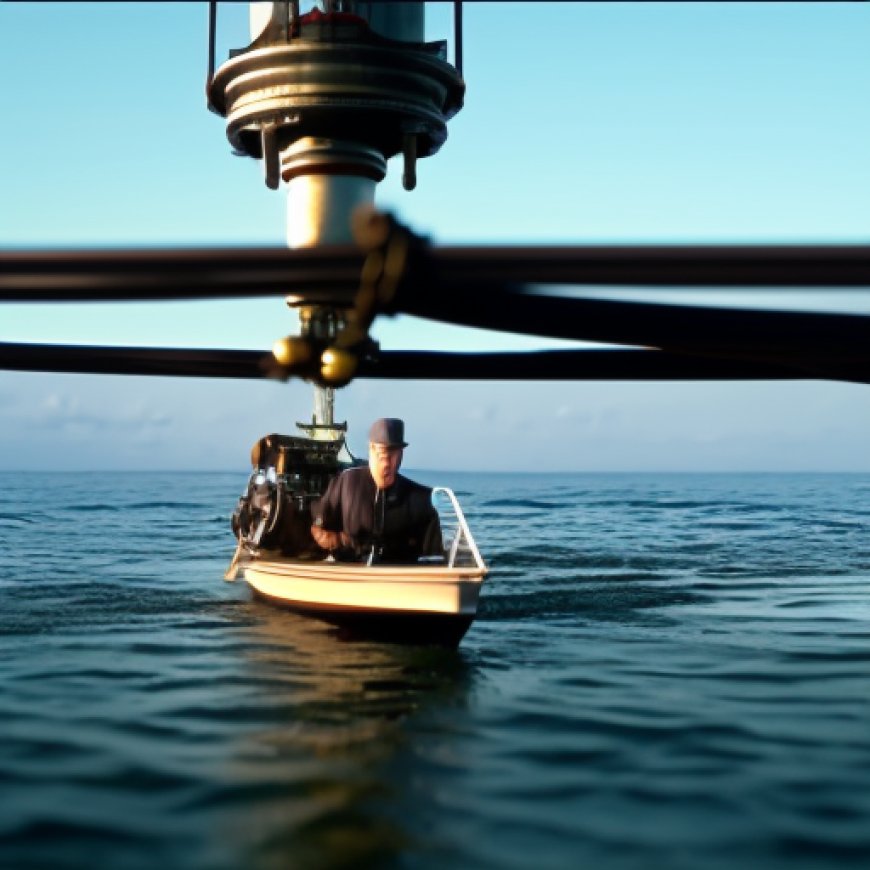Measuring Carbon’s Flow from Land to Sea – Eos
Measuring Carbon's Flow from Land to Sea Eos


This newsletter rocks.
Get the most fascinating science news stories of the week in your inbox every Friday.
Source: Journal of Geophysical Research: Biogeosciences
Understanding carbon transport can offer important information about a changing climate. For instance, it can help scientists measure ocean acidification or other threats increased carbon levels pose to aquatic ecosystems. But one major, and often overlooked, source of carbon in the marine environment is dissolved inorganic carbon (DIC), transported from land to ocean by streams and rivers.
A new article by Harley et al. examines, with greater spatial and temporal resolution than ever before, how DIC moves through the Southeast Alaska Drainage Basin—which spans a coastal region shaped by glaciers, heavy rainfall, and dense rainforest—into the Gulf of Alaska.
The researchers analyzed 2,455 watersheds throughout a rugged coastal region of Alaska, British Columbia, and the Yukon territory. These watersheds contain both large rivers and smaller streams and freshwater sources, including rainfall, snowmelt, and glacier melt. The researchers then classified the watersheds on the basis of their discharge regime, or seasonal pattern of streamflow, and whether they contain karst, a type of landscape composed of soluble carbonate rocks such as limestone.
Using historic data from the U.S. Geological Survey and current DIC measurements from streams in southeast Alaska, the researchers created a model that can predict how much carbon enters these marine ecosystems each month. Their findings correlated with past estimates, but the new models offered much more precise, detailed measurements of how DIC is discharged into ocean waters.
The models used in this study can be further refined and developed to help predict what DIC outputs in the Gulf of Alaska might look like in the future—valuable information to the communities in the region that depend on fishing and other marine resources. (Journal of Geophysical Research: Biogeosciences, https://doi.org/10.1029/2023JG007609, 2023)
—Rebecca Owen (@beccapox), Science Writer
Citation: Owen, R. (2023), Measuring carbon’s flow from land to sea, Eos, 104, https://doi.org/10.1029/2023EO230396. Published on 21 November 2023.
Text © 2023. AGU. CC BY-NC-ND 3.0
Except where otherwise noted, images are subject to copyright. Any reuse without express permission from the copyright owner is prohibited.
SDGs, Targets, and Indicators Analysis
1. Which SDGs are addressed or connected to the issues highlighted in the article?
- SDG 13: Climate Action
- SDG 14: Life Below Water
The article discusses the importance of understanding carbon transport and its impact on the marine environment. This directly relates to SDG 13, which aims to take urgent action to combat climate change and its impacts. Additionally, the article mentions the threat that increased carbon levels pose to aquatic ecosystems, highlighting the connection to SDG 14, which focuses on conserving and sustainably using the oceans, seas, and marine resources.
2. What specific targets under those SDGs can be identified based on the article’s content?
- SDG 13.2: Integrate climate change measures into national policies, strategies, and planning
- SDG 14.1: By 2025, prevent and significantly reduce marine pollution of all kinds
The article emphasizes the need to understand carbon transport and its impact on the marine environment. To address this issue, integrating climate change measures into national policies, strategies, and planning (SDG 13.2) is crucial. Additionally, by understanding carbon flows and sources, it becomes possible to prevent and reduce marine pollution caused by increased carbon levels (SDG 14.1).
3. Are there any indicators mentioned or implied in the article that can be used to measure progress towards the identified targets?
- Carbon transport models
- Measurements of dissolved inorganic carbon (DIC) in streams
The article mentions the use of carbon transport models to predict how much carbon enters marine ecosystems each month. These models can be further refined and developed to measure progress towards integrating climate change measures into national policies and strategies (SDG 13.2). Additionally, the measurements of dissolved inorganic carbon (DIC) in streams provide an indicator of carbon flows and can be used to assess progress in preventing and reducing marine pollution (SDG 14.1).
4. Table: SDGs, Targets, and Indicators
| SDGs | Targets | Indicators |
|---|---|---|
| SDG 13: Climate Action | 13.2: Integrate climate change measures into national policies, strategies, and planning | – Carbon transport models – Measurements of dissolved inorganic carbon (DIC) in streams |
| SDG 14: Life Below Water | 14.1: By 2025, prevent and significantly reduce marine pollution of all kinds | – Carbon transport models – Measurements of dissolved inorganic carbon (DIC) in streams |
The table summarizes the findings from analyzing the article, identifying the relevant SDGs, targets, and indicators. It shows that both SDG 13 and SDG 14 are connected to the issues discussed in the article. The specific targets under these SDGs are integrating climate change measures into national policies, strategies, and planning (SDG 13.2) and preventing and reducing marine pollution (SDG 14.1). The indicators mentioned in the article include carbon transport models and measurements of dissolved inorganic carbon (DIC) in streams. These indicators can be used to measure progress towards the identified targets.
Behold! This splendid article springs forth from the wellspring of knowledge, shaped by a wondrous proprietary AI technology that delved into a vast ocean of data, illuminating the path towards the Sustainable Development Goals. Remember that all rights are reserved by SDG Investors LLC, empowering us to champion progress together.
Source: eos.org

Join us, as fellow seekers of change, on a transformative journey at https://sdgtalks.ai/welcome, where you can become a member and actively contribute to shaping a brighter future.







